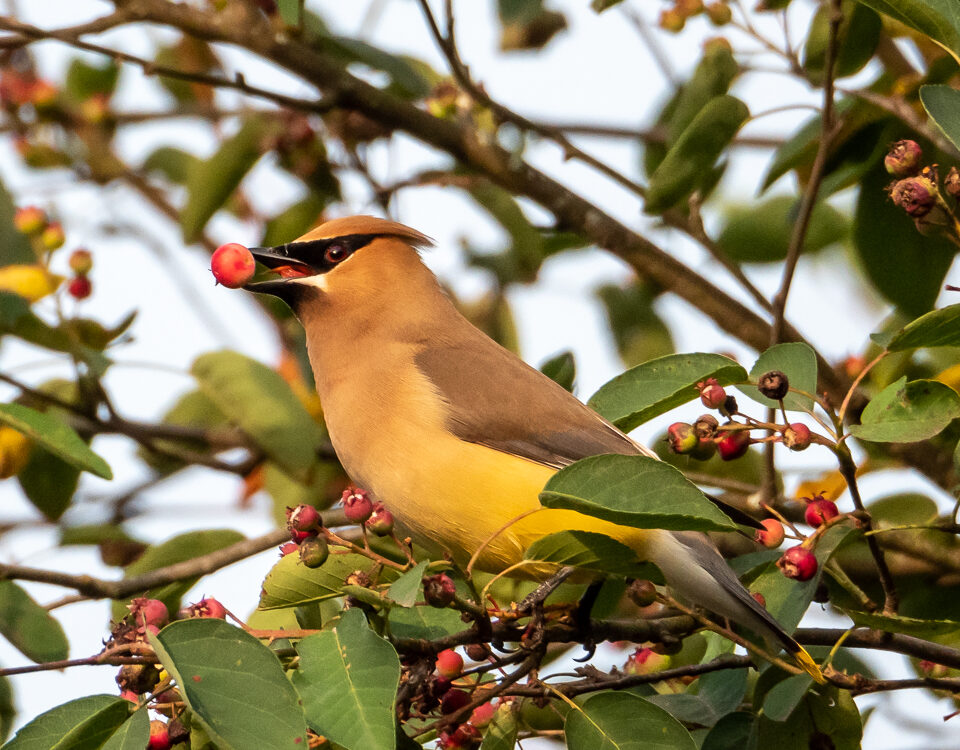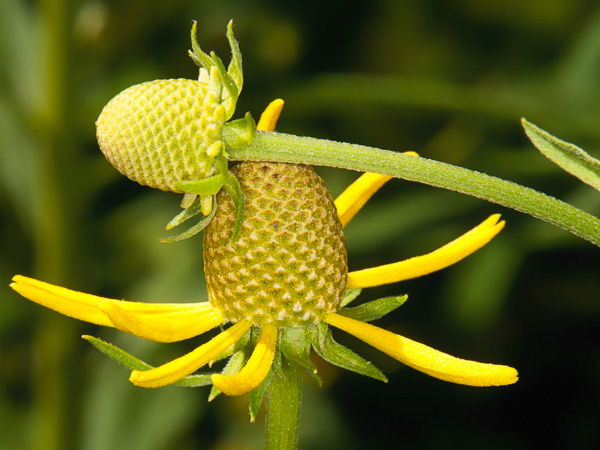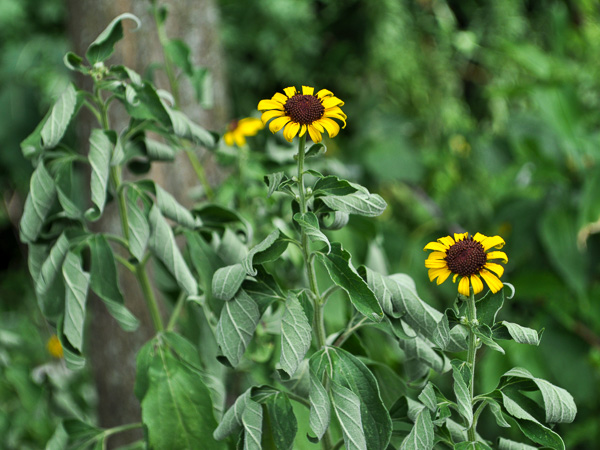
Butterfly Musings – Are numbers down this year?
July 24, 2014
Mid August Landscape Planning
August 13, 2015Rebalancing your Plant Portfolio
I’ve noted before that a basic principle of natural landscaping is to allow plants to move around, filling in gaps and finding their preferred niche. It never ceases to amaze me how sensitive some plants are to very small changes in habitat conditions and how they will seek their preferred location if allowed. Likewise few plants read the books and internet sites about how they are supposed to behave for a given site and surprise with either over or under-achieving growth.
Additionally, some plants really are prone to spreading – either by underground rhizomatous expansion or through self-sowing or simply by expansion of the crown. On the other hand there are plants that naturally recede or relinquish space to their more aggressive neighbors due to a short-lived nature or simply their manner of growth.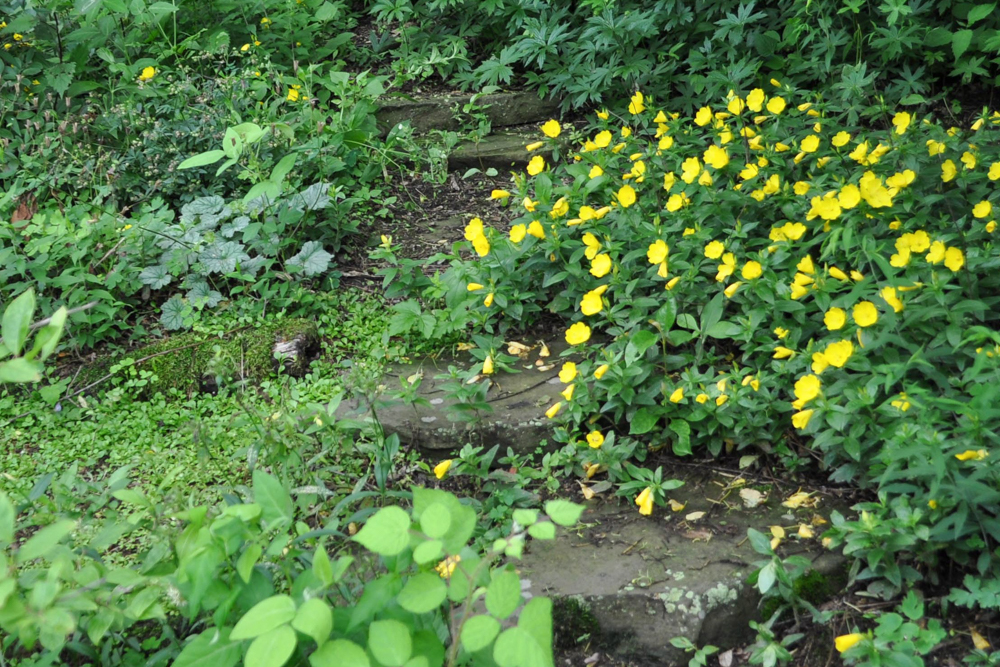
Here a nice patch of Oenothera fruticosa (Sundrops) has spread happily into the open space of a path and partly blocking the access of the path and the visual relief that it provides.
So, how does this all relate to design and natural landscape design in particular. One of the goals of good landscape design is to create visually appealing plant groupings. Principles such as balance and contrast of form, texture and color are put into play with initial designs. Then, the plants take over and begin to move around as described above and shown here. What’s a good natural landscape gardener to do?
One choice is to allow all of these changes to occur; in other words, allow the more aggressive, happier plants to have their way and overtake a planting area. This can be advantageous if your sole goal is to reduce maintenance. If, however you want to retain some level of the original design intent it may be necessary and desirable to intervene and “rebalance”.
The spreading plants can be dug, pulled or otherwise removed. These plants can be used somewhere else, donated to a willing recipient or simply composted. (composting perfectly good plants can initially be painful remembering the initial costs of plants, but for the time-pressed gardener it quickly becomes the norm!)
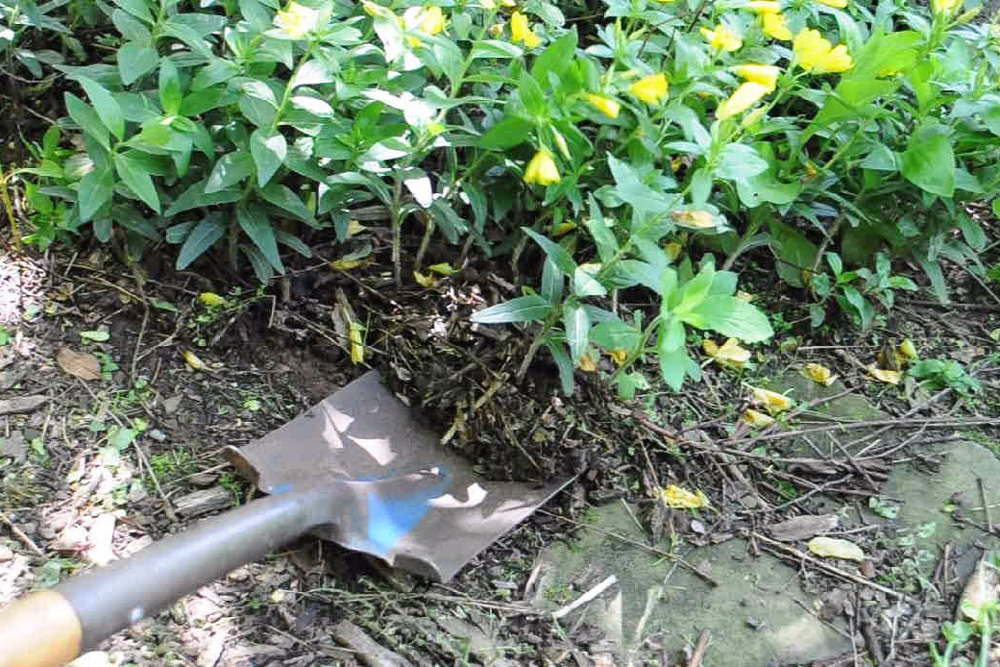 Above, a flat spade is easily slipped beneath the shallow roots of the Oenothera, allowing easily transplantable pieces to be created. Below, a piece is slipped into a loosened area in another location where it will quickly settle in with a minimal amount of care.
Above, a flat spade is easily slipped beneath the shallow roots of the Oenothera, allowing easily transplantable pieces to be created. Below, a piece is slipped into a loosened area in another location where it will quickly settle in with a minimal amount of care.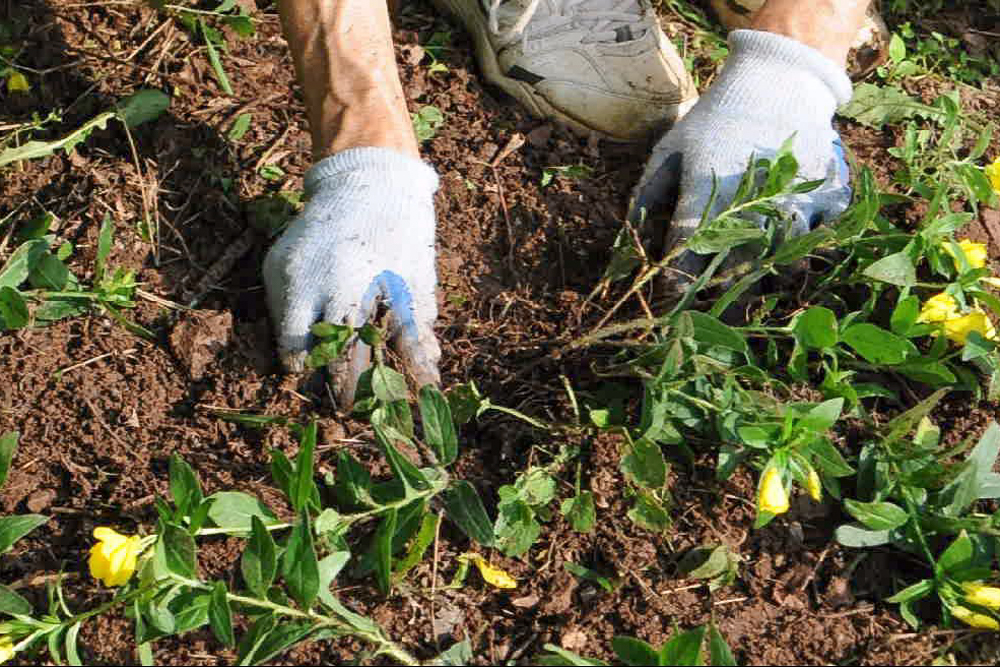
The end result of this process is the re-claimed path space shown in the image below. This type of decision making exemplifies the difference between natural and more traditional gardening thinking and in my opinion this additional “engaging in the process” is where a lot of the interest and fun lies in the natural gardening approach.

